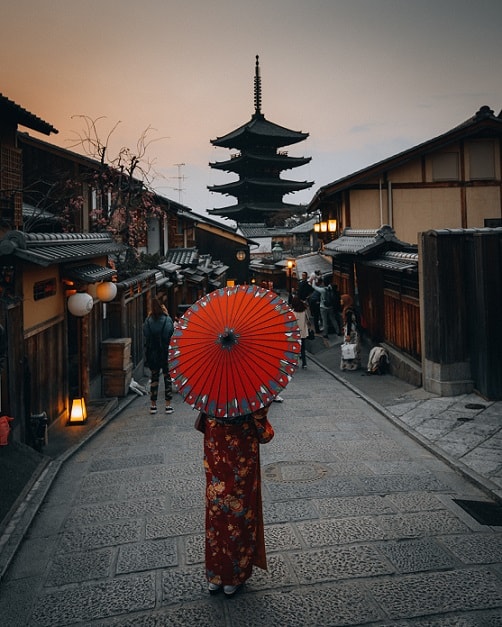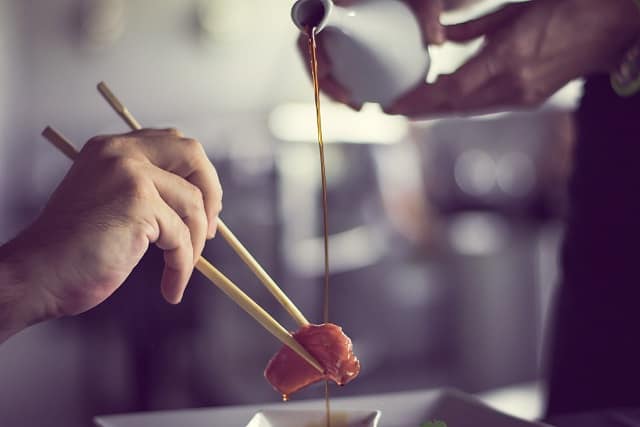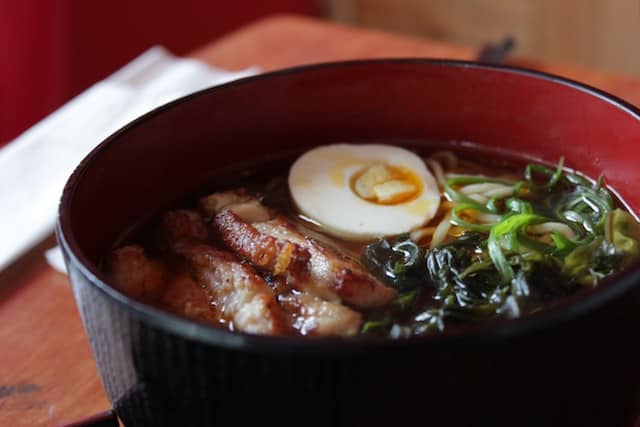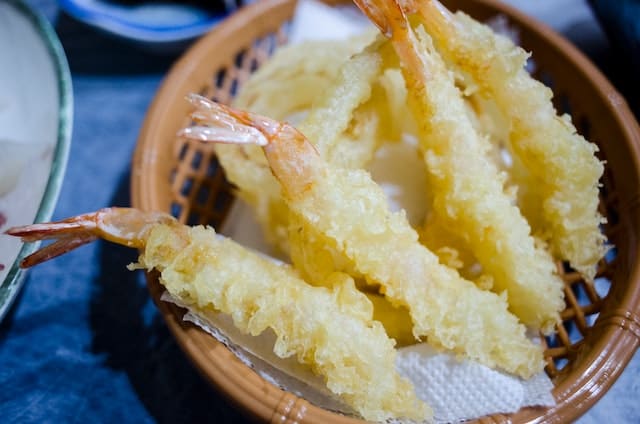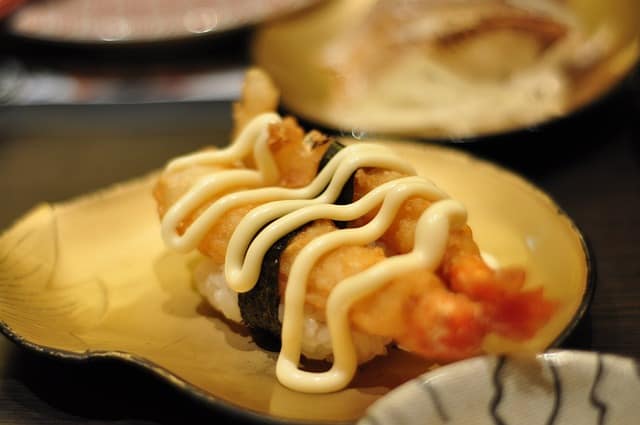FLAVORS OF JAPAN
“Itadakimasu”, said before each meal, with both hands put together in front of the face, means “I humbly receive”. This not only shows gratitude but is a sign of respect in the Japanese culture, The land of the rising sun.
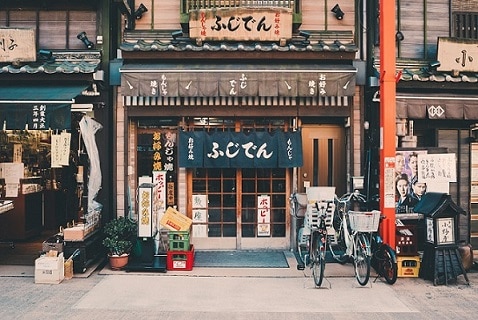
The Chinese influence
Japanese food culture was greatly influenced by Chinese culture. 14000 – 300BCE was known as the Jamōn period, the time in which rice was introduced to Japan by the Chinese. Referred to as Gohan or Meshi (which translates to “meal”) Rice became a staple of Japanese cuisine.
Buddhism became a big part of what shaped the culture, throughout the period of the Tang dynasty of China. This influence saw a set of rules and laws introduced, such as the criminalization of meat consumption at certain times of the year. These included but were not limited to horses, dogs, cows, chickens, monkeys, etc. Dogs and monkeys were mostly eaten as medicine and were mainly reserved for ritualistic and cultural celebrations influenced by China. Chickens were mostly kept as pets.
The primitive culture of Japan meant the non-existence of utensils. Hands were used for eating until the Chinese introduced chopsticks to Japan through Korea. Even then the chopstick was reserved for nobility, and so was “zen”, which were small tables that contained legs, while the masses would use the legless version called “oshiki”
Post Tang dynasty
Following the fall of the Tang dynasty, political & strategic changes took place throughout Japan. The Kamakura period, established by the first shōgun Minamoto Yorimoto saw the introduction of obān (the shōgun banquet), a banquet for military leaders. The humble nature of the banquet was through the avoidance of luxury and extravagance and a focus instead on minimalism, which was the opposite of what had been introduced prior by the Chinese. The menu consisted of umeboshi (pickled Japanese plum); Rice; abalone, Jellyfish, and Rice vinegar.
Buddhism became the primary religion and meat and fish were prohibited. Emperors throughout the ages forbade the killing of many animals until gradually, laws eased and meat and fish were slowly introduced into the diet. The consumption of all mammals was banned with the exception of whales, which were considered fish.
The 'sour-tasting' evolution.
Being an island nation, Japan turned its focus to fish. At this point, sushi was introduced as a means to preserve fish. Sushi was the process of fermenting fish in rice. This lacto-fermentation process would allow for the extended shelf life of fish. The end result was fish that tasted sour with complex umami flavors, hence the name “Sushi”, which translates to “sour-tasting”. The sushi we know today evolved from this practice and features fresh fish with vinegared rice (mimicking the fermentation process).
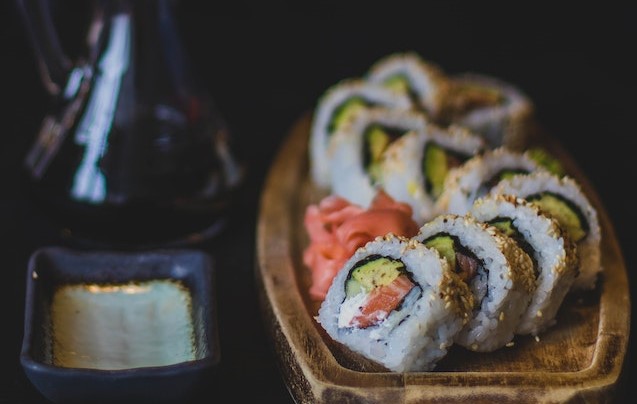
The Portuguese & the tempura
It was during the Edo period that most bans on meat consumption were lifted, thanks to Emperor Meiji the great. This period was also characterized by the welcoming and integration of western cultures into Japan. The Portuguese were the first Europeans to reach Japan, leading the establishment of trade between Japan & Europe around 1543. They were also the first to translate Japanese into a western language. Unlike many cultures around the world, Japan uses very little oil in food preparation, with the exception of tempura, aburaag, etc. The tempura was introduced to Japan by Portuguese missionaries in the 16th century. A version of tempura in Portugal is “Peixinhos da Horta”, which literally translates to “little fish from the garden”, and comprises different vegetables dipped in batter and deep fried.
Tempura is a culinary term for dipping food, especially fish in batter and deep frying it.
The word tempura is derived from the Latin tȇmpora(time/period), which, in roman catholicism, refers to a day of fasting prescribed for specific days in the first week of each season (Also referred to as the Ember days)
The 'clean' taste of Japan
The flavors of Japan are clean and minimalistic. Part of this is the minimal use of spice, which across cultures is mostly used as a seasoning for meats. Another Reason is the minimal use of oil in food preparations.
Seasoning
Japanese food is typically seasoned with dashi, soy sauce, mirin, sake, rice vinegar, sugar, and ginger. The element of umami is of vital importance in Japanese cuisine; this is showcased by the use of dashi in a lot of dishes. Dashi is a family of stocks (broths) used for a myriad of applications, the basic one being made by heating water containing kombu & shavings of katsuobushi (fermented skipjack tuna or bonito).
Red meat consumption is still kept to a minimum, with the notable varieties being kobe and wagyu. Chicken and pork also form a small part of the diet, with fish and vegetables forming a large part of the Japanese diet. Although vegetables are consumed in large amounts, it’s important to note that most preparations feature the use of dashi, which contains fish. Seasonality (Shun) is a major focus in Japanese cuisine and the balance of flavor and the marriage of dishes is based on the 4 seasons.
Washoku & Kaiseki
The traditional cuisine is known as Washoku and is based on a staple of rice (& or noodles) with miso soup and a collection of smaller accompaniments referred to as okazu. Okazu can be anything from fish (in the form of sashimi, sushi, or grilled), vegetables cooked in dashi or pickled, tofu, grilled kobe, etc. Washoku is based on the concept of “1 soup 3 sides”. Rice is typically served in a Chawan(rice bowl), with each item placed around to accompany the rice. In traditional etiquette, the practice of serving food of contrasting flavors together is not permitted, therefore each accompanying dish is served in its own bowl. All this with the exception of donburi (rice dish with meat, fish or veg) & nabemono (Japanese hot pot dishes).
Kaiseki is a multicourse meal originating from imperial Buddhist traditions, samurai, and involves the stimulation of the 5 senses. It comprises a bowl of miso soup and 3 dishes, traditionally:
Mukzuke – often sashimi
Nimono – Simmered foods
Yakimono – grilled foods
Drink
It’s common practice to drink green tea throughout the day. Matcha, which is finely ground green tea leaves, was traditionally mainly consumed during cultural activities. Sake is to the western world “Japanese beer” (nihonshu) and can be served chilled, warm, or at room temperature. In Japan sake can stand for any alcoholic beverage.
Flavors of Japan
| Azuki – Red Bean | Kinako – Soy bread flour | Pork | Soy Sauce |
| Bonito flakes | Kiromitsu – Molasses | Renkon (Lotus Root) | Tofu |
| Chicken | Kobe Beef | Rice vinegar | Tonkatsu Sauce |
| Daikon | Kombu | Sake | Tuna |
| Dashi | Matcha | Sansho berries / Spice | Udon Noodles |
| Edamame | Mirin | Sesame | Wagyu Beef |
| Fish & Seafood | Miso | Sesame oil | Wakame |
| Garlic | Mushrooms (Shiitake, Enoki, shimeji, etc) |
Shichimi spice blend | Wasabi |
| Ginger | Negi (Spring Onion) | Short grain(Sushi) rice | Yuzu |
| Gobo (Burdock Root) | Nori | Soba Noodles | |
| Japanese Sweet Potato | Panko | Soy Beans |
Dishes from Japan
Categories
Aemono – Dished topped with Sauce
Agemono – Deep Fried Dishes
Chinmi – Delicacies
Itamemono – Stir-fried Dishes
Mushimono – Steamed Dishes
Nabemono – Hot pot
Nimono – Stewed / Boiled Dishes
Sashimi – Slice raw fish
Suimono – Soups
Sunomono – Vinegared Dishes
Tsukemono – Pickled vegetables
Yakimono – Grilled / Fried Dishes
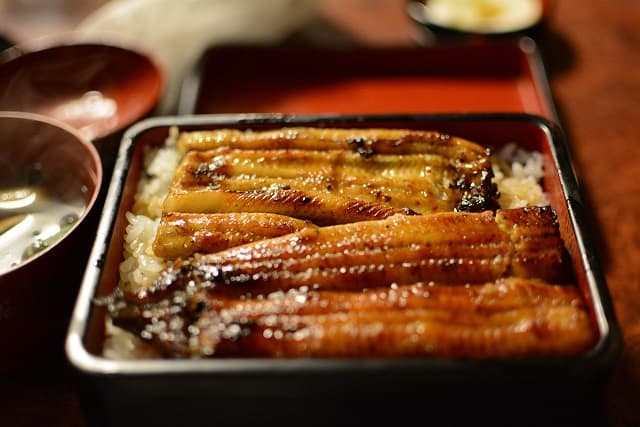
Common Dishes
Kare Raisu – Curry, serves with Rice
Nikujaga – Meat, veg, potatoes simmered in stock
Miso Soup
Sukiyaki – type of nabemono
Oden – type of nabemono
Tamagoyaki – Japanese omelet
Donburi – Stewed or fried meat, veg or fish(typically eel) served over steamed rice
Ramen – Noodle soup dish
Sushi
Yakitori – Barbequed chicken skewers
Tempura
Okonomiyaki – Savory pancake with cabbage, meats, etc mixed into the batter before frying
Gyoza – Savory dumplings with filling encased by a gyoza wrapper, then steamed, and/or fried
Onigiri/Nigirimeshi/Omusubi – Rice Triangles/balls with a filling in the center. Also known as the Japanese sandwich.
Takoyaki – Octopus dumplings. Unlike gyoza, these are prepared using batter and a special mold.
Yakisoba – Japanese stir-fry using soba noodles
Chawanmushi – Steamed savory custard made with egg & Dashi. Various ingredients such as chicken, kamaboko(fish cakes), mushroom, mitsuba(Japanese parsley), ginkgo nuts, etc are placed in a Chawan, topped with the custard mix, then steamed.
Wagashi – Japanese sweets made using chi rice cakes, Anko paste, kanten, sugar, chestnut, etc.
Conclusion
As unique as Japanese cuisine is, it has through the ages been shaped by other cultures such as the Chinese (rice, ramen, gyōza), American (Hamburgers), Mexican (taco rice), Indian (Curries), Portuguese(tempura), etc. The Japanese culture of focus on individual flavors, the respect for each ingredient, and the samurai focus on the preparation of food have led to the perfection and refinement of the cuisine that influenced the nation. It’s no wonder Japan holds the title of the country with the most 3 Michelin-starred restaurants.
